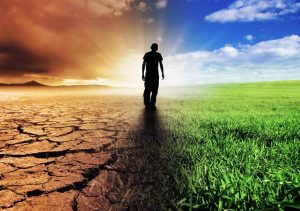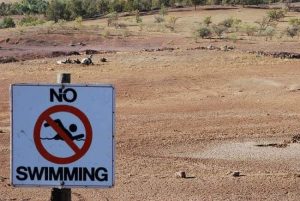Water Rights
By Michael FaginWeather ConditionsWith 0 comments
Water usage is a big issue in the west
Managing Western Water Rights. Take a critical element to life, add in its limited and weather dependent cycle, throw in jurisdictions from several states, the Federal Government and Native American tribes, large cities which demand huge flows of said resource, conservation requirements, environmental groups, farmers, ranchers and orchard growers and you have a start, barely, on managing water resources. This article is focused on three states, California, Oregon and Washington. Other states will have other issues but these three have the most significant populations and areas to cover for my purpose.
Government Agencies
First, we’ll look at the federal agencies involved in water resources. Going in to great detail about each of these agencies is well outside the scope of this article and would take a book to even begin.
The agencies begin with the US Army Corps of Engineers who are responsible for flood control and navigation work. The Environmental Protection Agency which has jurisdiction over water quality.
These two agencies are the largest and most frequent target of environmentalists and water users as they have stood accused of the entire range from neglect to over reaching rules and regulations. Going into that thorn tangle would need a couple of books all by themselves.
National Oceanic and Atmospheric Agency and the US Geologic Service provide input on climate forecasts and ground water resources. The US Department of Agriculture and Department of the Interior act as the umbrella agencies for the Forest Service and Park Service who must provide for water resource allocations and usage, an especially big job throughout the West where huge swathes of land are controlled.
The National Marine Fisheries and Department of Fish and Wildlife put forth rules and regulations as part of their tasks of managing their areas of expertise. The Bureau of Land Management is responsible for areas of federal land not in the National Parks or Forests. In the West, this may cover areas larger than several states. In the more arid areas of the West, the giant irrigation projects of the Bureau of Reclamation have transformed Eastern Washington into a garden of food production.
In concert with the Colorado River Compact, the International Boundary and Water Commission manages the flow of water along the US Mexico border. There are more, but the above are the biggest and most visible. The California Department of Water Resources acts as the overall agency responsible for allocation in that state. Oregon’s Water Resource Department and the Department of Ecology in Washington State share similar roles.
In addition, many city and county agencies, Native American Reservations and Irrigation Districts all have a voice, in varying degrees, in water resources. For example, the Los Angeles Water District as long as 100 years ago, was building canals and aqueducts to bring water to the basin to grow a vast city. In Washington, cities such as Tacoma and Seattle hold large areas of forest reserve along with dams and reservoirs to supply fresh, clean water to growing populations. Entry into these watersheds is generally forbidden to all but authorized employees.
Snowpack
Western water comes from two main sources. Snow pack and ground water. Annual mountain snowfall is closely monitored in each of these states as water allocations for irrigation and farming as well as for usage by population centers relies on snow. Spring run off fills reservoirs and recharges ground water. The very low snowpack of the last five years in the Sierra’s of California produced the devastating droughts seen. As of March 1, this year though, snowpack was well above the 100% average. This will provide both welcome relief but also, as seen in the Oroville Dam crisis may expose residents to flood events and catastrophic damage in the event of a dam failure.
Ground water extraction, via wells, supplies much of the water on smaller farms and homes where irrigation is impractical or nonexistent. As water levels in aquifers is pumped wells must be drilled deeper to pull water out. In some cases, evident most clearly in California recently, subsidence can occur. This is where so much water has been pumped from an aquifer that the ground above sinks, or subsides. This may prove damaging to infrastructure as time passes and extraction continues.
Cooperation between agencies and interactions among them are often difficult to gauge as there have been informal agreements and many accusations of back door dealings in the past. The Owens Valley Water Wars come immediately to mind between the farmers and ranchers of the Owens Valley and the city of Los Angeles in the first part of the last century. There remains much bitterness all around from the entire episode.
Smaller scale events have been alleged in other areas and states but none with the notoriety of the Owens Valley conflict, since made famous by the movie, Chinatown. A fictionalized account.
There are also theories that large dam and reservoir projects, especially on or near fault lines may induce earthquakes by the filling and emptying cycles. An 8.0 earthquake in China has been blamed locally on just such an event cycle although the Beijing government denies that as a cause or factor. Evidence to date is intriguing but not as yet actually proven.
Agriculture Needs
Crops and land use issue loom large in the management of water resources. As an example, the growth in almond orchards in Southern California, and to a lesser degree, pistachios and pomegranates, use immense amounts of water. Each individual almond is said to take an entire gallon of water to grow. Consumer demand makes this a profitable industry as long as water remains cheap, and is treated as a commodity. Therein lies one of the ongoing conflicts. Is water commodity, sold to the highest, or as has been alleged, the best connected, bidder? Or, is it a right to be directed to the areas of greatest need? And, just as importantly, who decides?
Is unfettered population growth a higher need than watering crops to feed that population? Are there, can there be, areas where population growth should be, restricted to allow the water resources to maintain a balanced environment? Again, who decides what that looks like?
It is said that agriculture is 2% of California’s economy but uses 80% of the water. Is this a fair distribution? Does the state have the right or ability to shut down farming and ranching so cities may water their lawns? Is money the driving factor in allocations?
The great irrigation projects in Washington State were started during the Great Depression to provide jobs and open areas to farming that would otherwise have remained too dry to grow crops. Here in Eastern Washington those projects and the dams that make them sustainable even now are seen as an unfettered good. Others however, are concerned about the effects on fish stocks and the natural flows of the rivers. The Columbia has one remaining wild space along the Hanford Reach. Everything else is a series of lakes behind dams. Those dams of course, provide hydroelectric power throughout the West so again, what is the greatest good? Who decides?
Climate change is also an immense factor in this discussion. The decline in overall snowpack, especially in the Sierra’s of California has affected and intensified the calls for conservation and better allocations. We are presently in an interglacial period along with human impacts where a warming climate is causing ice retreat and putting more liquid water into the oceans. Humans have never witnessed this cycle when population has been growing faster than resource recovery.
Obviously, such pressures need to be addressed but again, who decides? What mechanism is consistent with human rights? Water management also must address water quality and pollution. Whether it’s toxic waste, lack of sanitation, even, as we’ve witnessed in Michigan, lead pipes, what is going to be the cost of remediation and clean up? How long and what should be prioritized? Again and again, who decides?
Managing Western Water Rights
If all this seems to be a confusing mess of conflicts and a mass of myriad priorities, it is. Placing value on a commodity or resource is difficult. With water, the disagreements can be one of farmers versus vacation home owners and their lakefront properties. To save fish and restore salmon runs do we remove the Snake River dams which provide power and river transport for the legume and vegetable farmers of Idaho, or do we destroy their livelihoods by making transportation costs out of reach?
All of these are hard questions and deserve careful and clear thinking and negotiation. There is not, nor could there ever be, a one size fits all solution. With the uncertainties of the effects of climate change unfolding rational and methodical thought must take the place of an all or nothing approach. The absolute certainty is that doing nothing or hoping for the best is a dead end for everyone.
Written by Robert Morthorst

